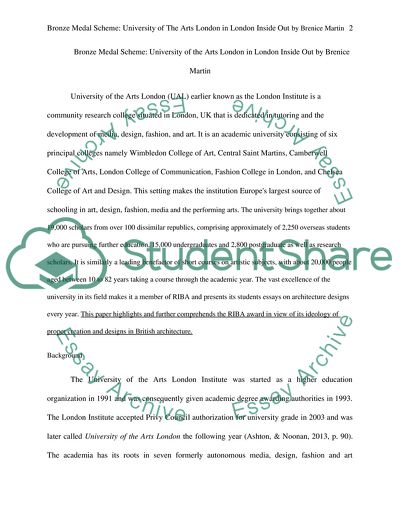Cite this document
(Bronze Medal Scheme: University of the Arts London in London Inside Out Research Proposal Example | Topics and Well Written Essays - 2250 words, n.d.)
Bronze Medal Scheme: University of the Arts London in London Inside Out Research Proposal Example | Topics and Well Written Essays - 2250 words. https://studentshare.org/architecture/1860331-bronze-medal-scheme-inside-out
Bronze Medal Scheme: University of the Arts London in London Inside Out Research Proposal Example | Topics and Well Written Essays - 2250 words. https://studentshare.org/architecture/1860331-bronze-medal-scheme-inside-out
(Bronze Medal Scheme: University of the Arts London in London Inside Out Research Proposal Example | Topics and Well Written Essays - 2250 Words)
Bronze Medal Scheme: University of the Arts London in London Inside Out Research Proposal Example | Topics and Well Written Essays - 2250 Words. https://studentshare.org/architecture/1860331-bronze-medal-scheme-inside-out.
Bronze Medal Scheme: University of the Arts London in London Inside Out Research Proposal Example | Topics and Well Written Essays - 2250 Words. https://studentshare.org/architecture/1860331-bronze-medal-scheme-inside-out.
“Bronze Medal Scheme: University of the Arts London in London Inside Out Research Proposal Example | Topics and Well Written Essays - 2250 Words”. https://studentshare.org/architecture/1860331-bronze-medal-scheme-inside-out.


